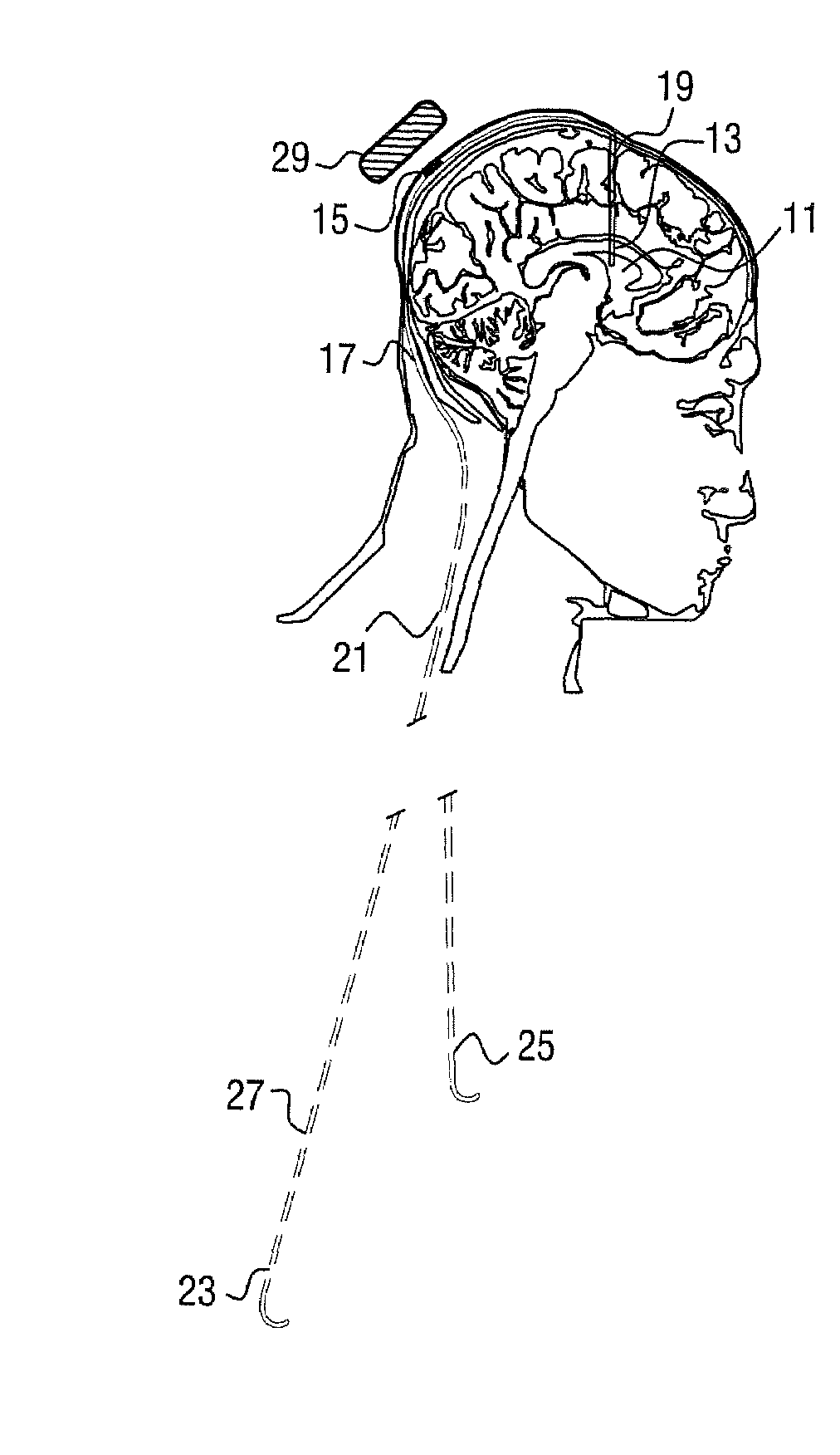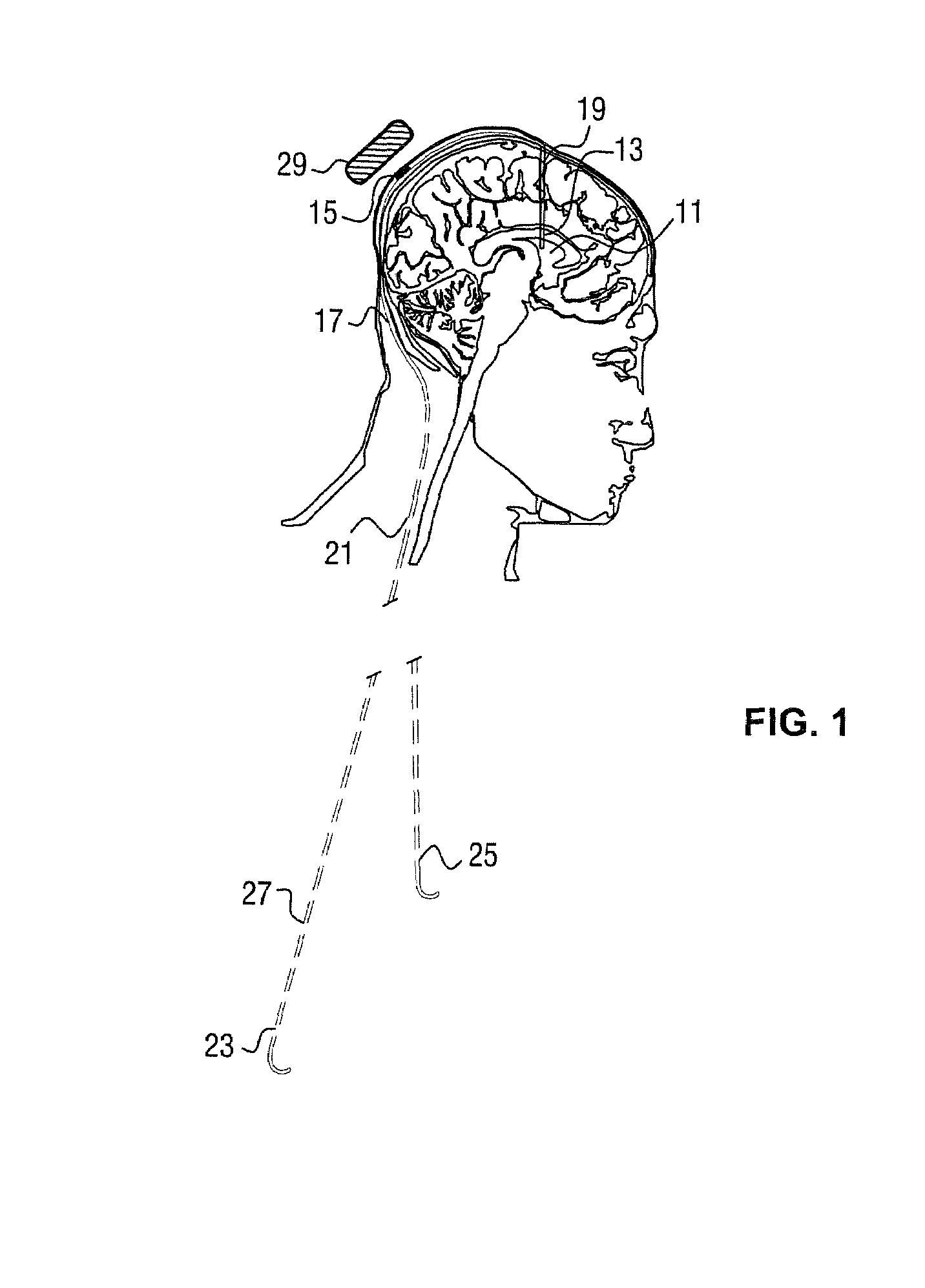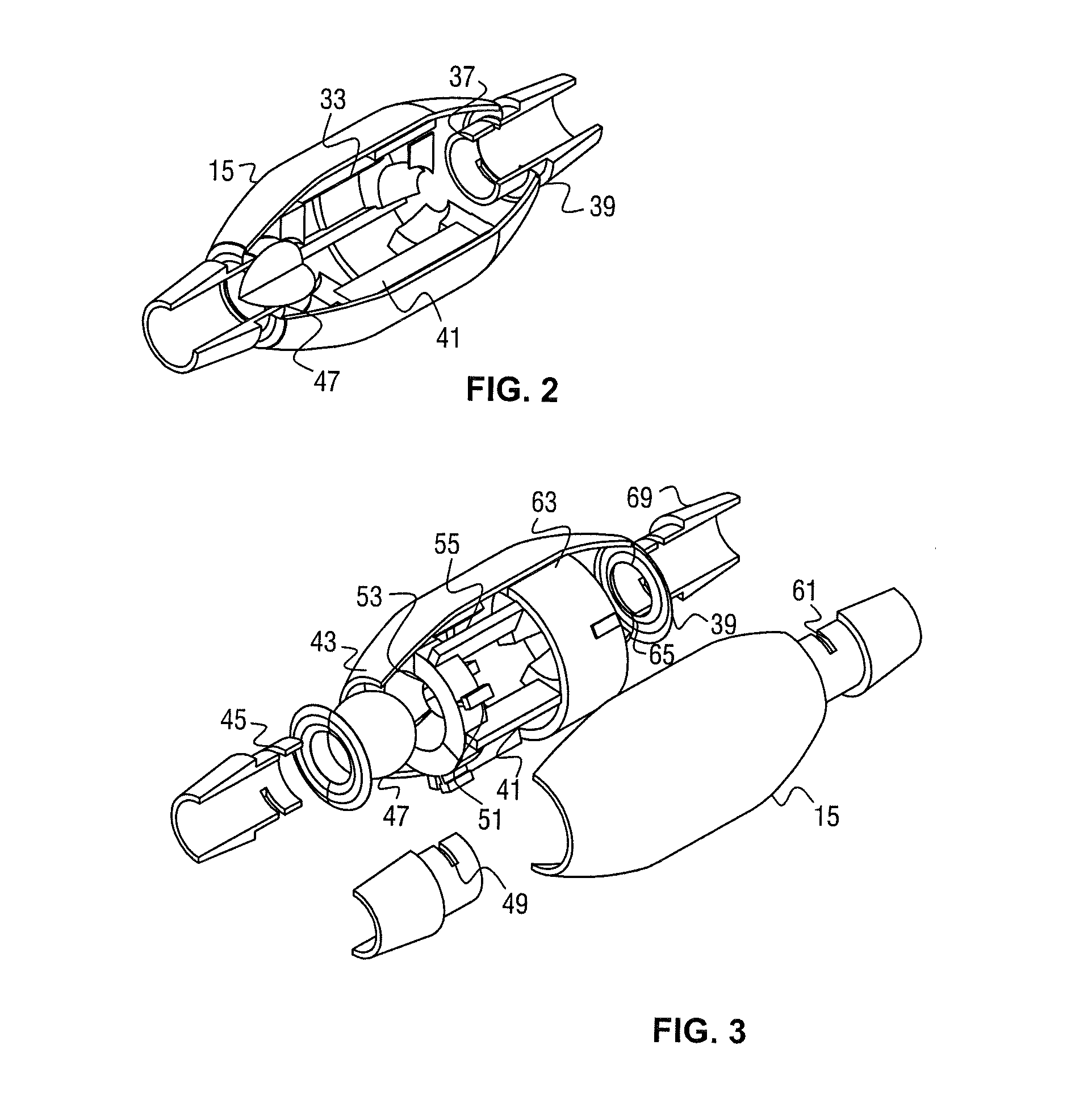Electroactive polymer actuated cerebrospinal fluid shunt
a cerebrospinal fluid and electroactive technology, applied in the field of electroactive polymer actuated cerebrospinal fluid shunt, can solve the problems of hydrocephalus through the obstruction or excessive production of cerebrospinal fluid in the brain, other dangerous conditions, impaired blood flow, etc., and achieve the effect of reducing the number of mechanical components and reducing the possibility of potential obstruction
- Summary
- Abstract
- Description
- Claims
- Application Information
AI Technical Summary
Benefits of technology
Problems solved by technology
Method used
Image
Examples
Embodiment Construction
[0027]In the embodiment present in FIG. 1, a typical cerebrospinal fluid (CSF) shunt is shown with all of its essential elements and how they are implanted within a patient's body. The electroactive polymer actuated shunt valve 15 is located at a point underneath the scalp of a patient which is coupled to a ventricular catheter 19 that is inserted into the brain ventricle 11. The ventricular catheter 19 receives CSF from its distal end 13 which flows to the electroactive polymer actuated shunt valve 15. The control and regulation of the flow of CSF is ultimately defined by a predetermined threshold pressure which can ultimately be adjusted through the external control unit 29 which is placed directly over the scalp protrusion where the shunt valve 15 is located. Once the threshold pressure is defined and / or continuously adjusted based upon pressure levels read by an electroactive polymer transducer or a sensor also coupled to the shunt valve 15, the valve redirects the CSF to a dist...
PUM
 Login to View More
Login to View More Abstract
Description
Claims
Application Information
 Login to View More
Login to View More - R&D
- Intellectual Property
- Life Sciences
- Materials
- Tech Scout
- Unparalleled Data Quality
- Higher Quality Content
- 60% Fewer Hallucinations
Browse by: Latest US Patents, China's latest patents, Technical Efficacy Thesaurus, Application Domain, Technology Topic, Popular Technical Reports.
© 2025 PatSnap. All rights reserved.Legal|Privacy policy|Modern Slavery Act Transparency Statement|Sitemap|About US| Contact US: help@patsnap.com



